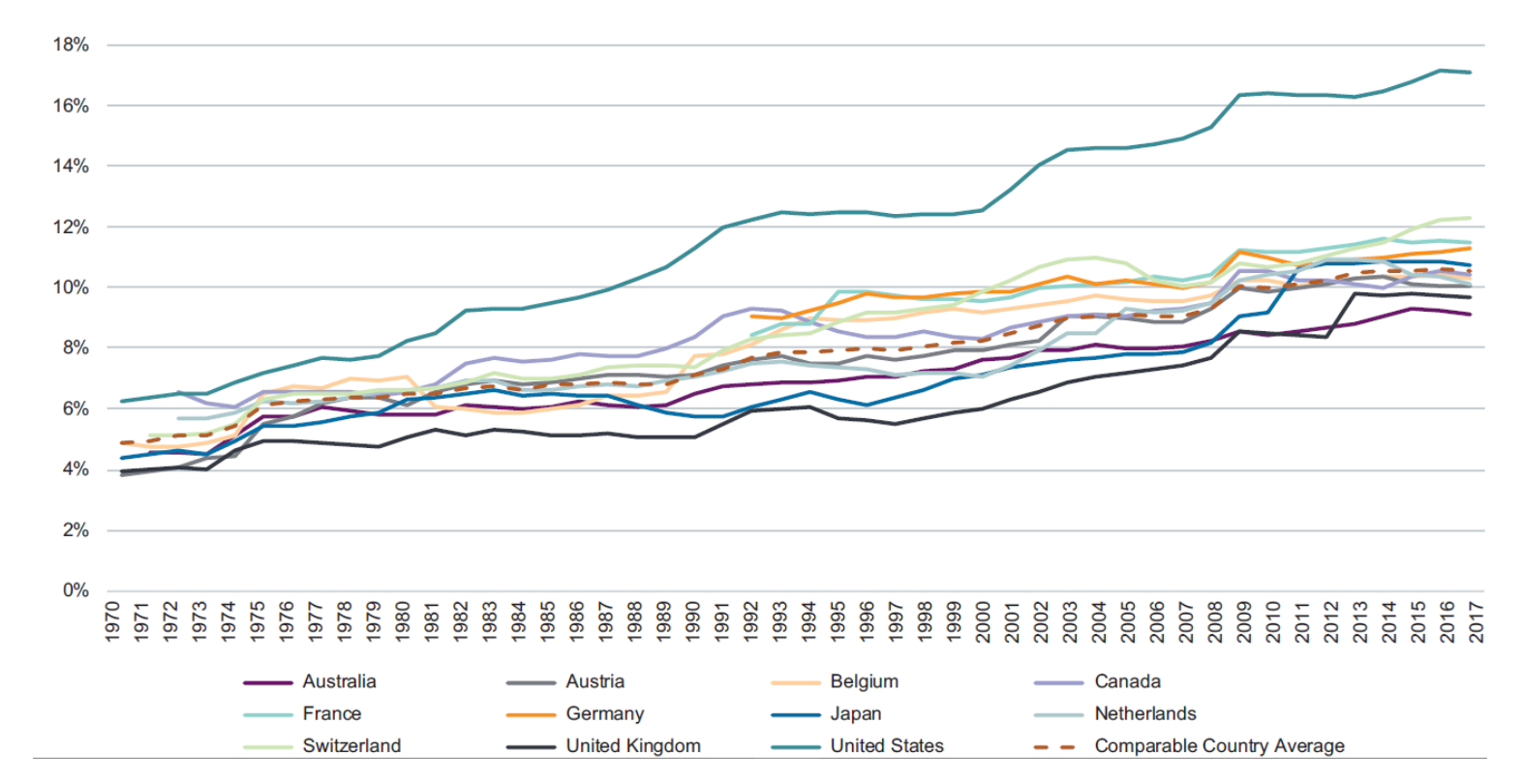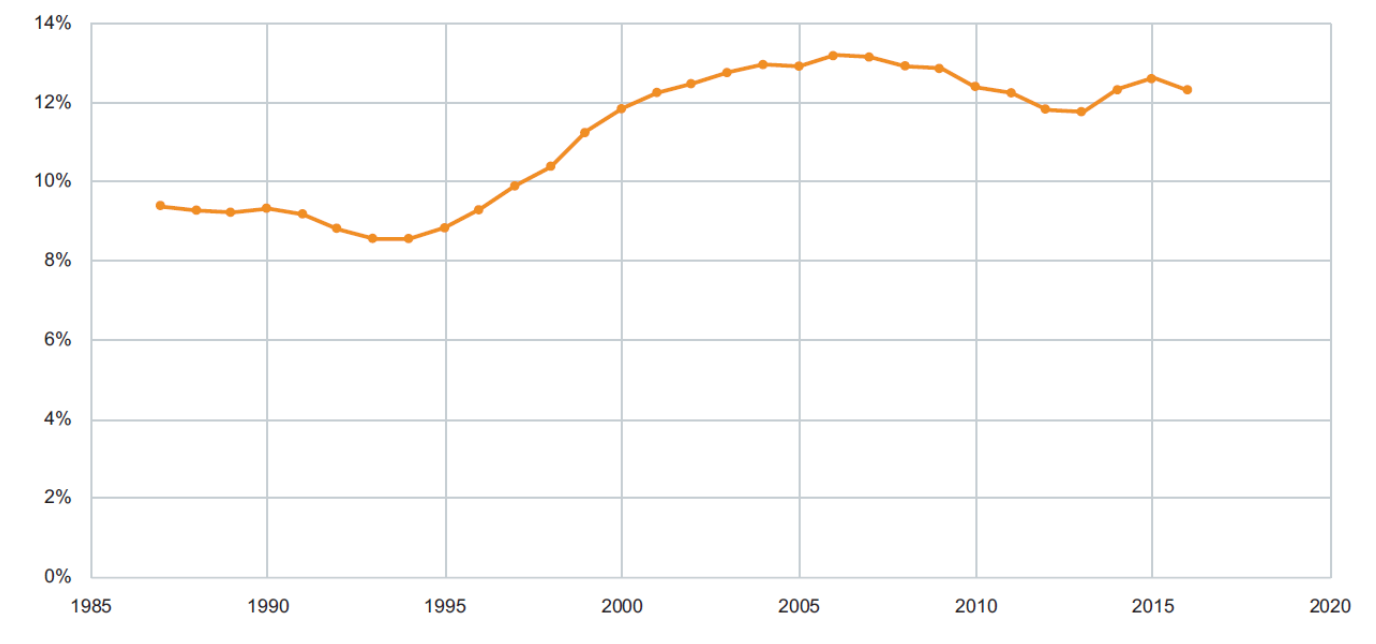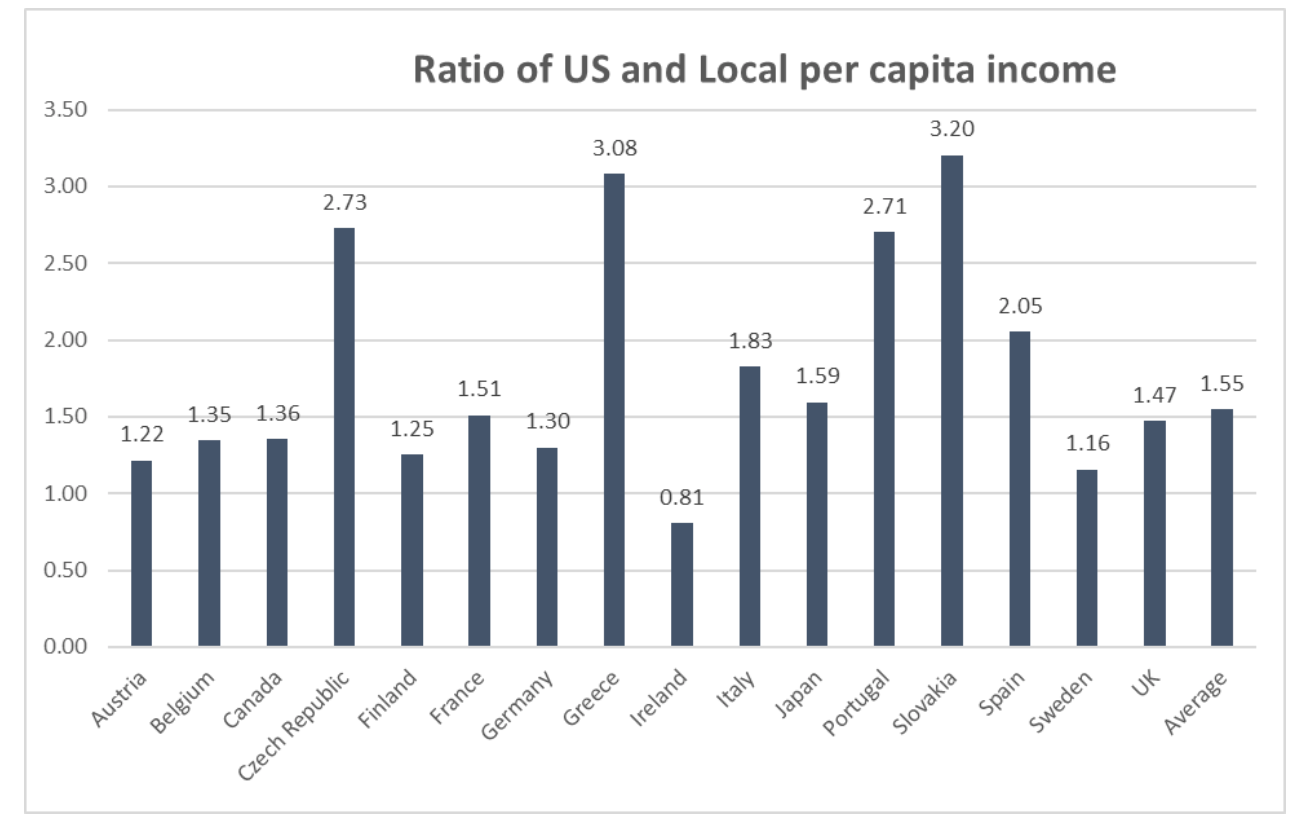International Price Referencing: Stacking the Deck with Lower Income Economies
This article discusses how cost differences with other countries reflect income differences, how these differences are typical for cost in medical services, and more.
Prescription drug pricing has been the focal point of government and private payers as being the primary issue that they want to attack in addressing their concerns over skyrocketing cost of healthcare. It is probably the only issue that U.S. Democrats and Republicans agree on. Only their disdain for each other in today’s polarized political climate is standing in the way of what a congress majority may think is a “solution.”
In this article, I will argue that 1) cost differences with other countries reflect income differences, 2) these differences are typical for cost in medical services, and 3) forcing higher prices outside the United States may lead to even higher U.S. prices.
U.S. cost of healthcare has been rising with prescription drugs having a constant share
Cost of healthcare and cost of drugs have indeed gone up over the last couple decades. The U.S. share of GDP in healthcare spending has nearly tripled from 6.2% in 1970 to 17.2% in 2017 as is shown in Figure 1. Other high-income countries have also seen steep increases in healthcare cost from 4.9% in 1970 to 10.5% in 2017. CMS projections that healthcare cost in the U.S. will rise to 19.4% of GDP by 20271 have further added to the urgency to handle the issue.

Figure 1. Health care cost as a percentage of GDP (click to enlarge)
Source: OECD, 2019
The pharmaceutical share of total healthcare cost in the U.S. has been fluctuating around 12-13% since 2000 as is shown in Figure 2. Prescription drugs are a part of the growing healthcare bill. Its share is not growing, but drug cost is receiving the brunt of political and media attention-12-13% of the problem seems to get 90% of the political attention. We discuss international price referencing for drugs, not for physician fees.

Figure 2. Prescription drug share of cost of healthcare
Source: OECD, 2019
Gaming the International Price Index
One of the Trump administration plans that is under debate is the introduction of an International Price Index (IPI), which would be used to force down Medicare Part B price levels. The IPI basket of 16 countries that is supposedly “equivalent” to the U.S. includes the Czech Republic, Slovakia, and Greece. Figure 3 shows a comparison of per capita incomes of the 16 referenced countries with the U.S. The U.S. per capita income is 1.55 times that of the average of the basket, with only Ireland having a higher per capita income. For all others, the U.S. per capita income is higher and for Greece and Slovakia it is even more than three times higher. There’s hardly a comparison with equivalent economies. It is not atypical for budget-sensitive country governments to “stack the deck” by choosing lower income countries for comparisons. Canada is in the process of replacing the U.S. and Switzerland in its own basket of countries with lower income countries.

Figure 3. Per capita income ratio (US/Local Country) across IPI basket countries (click to enlarge)
Source: World Bank
Physician Incomes are equivalently higher in the U.S.
Another way to look at international drug pricing is to consider international cost differences between related services. Medical cost is a major component of research and development investment and physician support services for the pharmaceutical industry. Figures 4 and 5 show differences in annual incomes for general physicians and for oncologists. While the comparison is somewhat different between the two specialties, in both cases U.S. physicians earn more than most of their counterparts in other countries. Except for Switzerland, all European salaries are much lower; physicians in the UK and Spain only get a fraction of their U.S. counterparts. Interestingly, Canadian physicians’ income tops the charts, even resulting in physician protests2 that their salaries are too high. This seems in stark contrast to the Canadian push towards referencing drug pricing to a modified basket of countries with clearly much lower physician salaries.

Figure 4. Oncologists’ compensation Figure 5. General Physicians’ compensation (click to enlarge)
Sources: payscale.com, neuvoo.ca/salary, salaryexpert.com, salaryexplorer.com, salarieswiki.com
Why paying more may actually mean paying less
What is a fair price for a product? For many products we think a fair price is one where the manufacturer has a reasonable profit over its cost of manufacturing and marketing. Ideally, we want to rely on a competitive market to drive what constitutes a reasonable profit. Since we usually don’t have good insight into the cost structure of a company and product, we tend to compare prices of similar products that may or may not be a direct substitute.
Putting a fair value on products that are not directly interchangeable, not commodities, can be hard. If we find out that someone paid less than we did, we are naturally upset. Imagine a neighbor paying $2,000 less for the same car. We all know about the example of the flight ticket cost being vastly different between people sitting on equivalent seats on a plane. Booking early or booking on flights with expected overcapacity can lead to lower prices. This can be upsetting, but may not seem all that unfair if everybody can get the same deal under the same circumstances. Leaving an airplane seat empty is a large opportunity cost for an airline, as the cost of transporting the passenger is relatively low in comparison to the additional revenue. For many manufactured products there is a substantial cost of goods. As a result, there are limited opportunities for price differentiation without making a loss on products sold at the lowest prices.
For prescription drugs, the actual cost of manufacturing a “pill” is relatively low in comparison to the total cost of operations (medical infrastructure, research and development, etc.). In such a situation, like in the case with the airline seat, it makes sense to offer a product at a lower price if it would otherwise not be sold.
Forcing a higher price in, for example, Europe and Africa will lock companies out of many markets and may require even higher U.S. prices.
To illustrate this point, we need to do some simple math. Consider a simplified example, where a new drug is developed to treat one million patients in the U.S. and two million patients in Africa over a period of 10 years. If it costs $3 billion to develop the drug, including cost of capital and some reasonable profit, and marginal cost of manufacturing would be $200 per patient, the price per patient would be $1,200. However, this is a pipedream, as very few governments and patients can afford that. If no patient in Africa can afford the drug, the actual cost per patient in the U.S. would have to go up to $3,200 as they would have to pay all the overhead costs. Charging a lower price of perhaps $700 in Africa could enable more governments of patients to buy the drug. If we can thus reach 50% of the African population, net price in the U.S. could drop from $3,200 to $2,700. How this works out in real life depends on the ability and willingness to pay in African countries, which results in a price elasticity of demand.
This example is just to demonstrate that besides solidarity reasons, there can be valid economic reasons to consider adjusting price to the local income level as it will enable more patients to contribute to cost of development and overhead. While the example only included the U.S. and a middle-income African country, the principle equally applies across the U.S. and European countries with on average about 65% of U.S. per capita income.
Differential pricing of prescription drugs between countries makes sense from both a humanistic and from an economic perspective. For individual U.S. patients we need to make sure however that insurance deductibles and co-payments are not creating an undue hurdle to needed healthcare.
References
Ed Schoonveld is managing partner of ZS’s value and access practice and author of the book “The Price of Global Health.” Contact him at ed.schoonveld@zs.com.
Trump: 'Major Tariff' on Pharmaceuticals Coming Soon
Published: April 9th 2025 | Updated: April 9th 2025“We’re going to tariff our pharmaceuticals, and once we do that, they are going to come rushing back into our country," President Donald J. Trump said during a Tuesday night dinner in Washington.